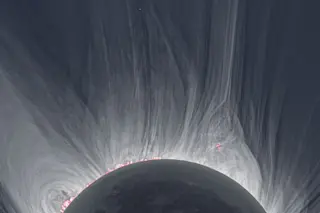An image of the sun's corona taken during a 2008 solar eclipse in Mongolia. (Credit: Miloslav Druckmüller (Brno U. of Tech.), Martin Dietzel, Peter Aniol, Vojtech Rušin) When the moon slides in front of the sun Monday, millions of viewers will catch a glimpse of the sun's corona, which will appear as a hazy glow outlining the solid shadow in front of our star. Scientists will be watching closely as well, because eclipses are one of the few times they can easily gather data on a region of the sun that is still poorly understood. The corona is the atmosphere of our sun, a swirl of charged particles that extends millions of miles into space, swept into filamentous loops and coils by the sun's powerful magnetic field. It's spread thin, which is why we can't normally see it, but the corona is hot, reaching millions of degrees kelvin at times, ...
Darkness Will Reveal the Sun's Mysterious Corona
Discover the sun's corona during the next solar eclipse, revealing insights into its hot atmosphere and magnetic field dynamics.
More on Discover
Stay Curious
SubscribeTo The Magazine
Save up to 40% off the cover price when you subscribe to Discover magazine.
Subscribe













